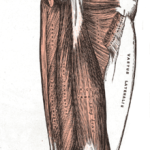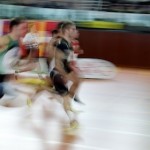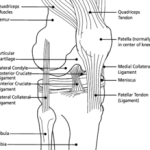We Are Mixing It Up
As promised, today we are mixing it up. We are going to do something a little bit different. Today is a guest post from Richard Evans, who is the Head Physiotherapist from Right to Dream (discussed below). We have had a few contacts with Rich, and he was keen to get involved with contributing some content to the site. So from this month, Rich will be contributing to the site by adding some of his own clinical tips and posting interesting case studies for discussion amongst the community here at TheSportsPhysiotherapist.com. I thought that he was in such a unique and interesting situation I could not say no. He has got some great things to talk about from a unique perspective, so enjoy (over to you Rich)…
Introducing Right To Dream
Right to Dream (RtD) is a registered charity in Ghana, Sierra Leone, the UK and US. Our mission is ‘to offer talented, underprivileged children the opportunity to reach their true potential in life and claim a better future for Africa’.
The Right to Dream Academy in Ghana is a non-profit making, fully residential international school which offers five year scholarships to children aged 10 and above. At the Academy we are focused on EVERY child achieving success and reaching their true potential, using the skills and knowledge we teach them and the experiences we offer, to build a better life for themselves, their families and their communities.
RtD started in 1999 on a small scale with a few boys on a dust pitch in Accra and has grown into a hugely successful fully residential international school, offering scholarships to children drawn from all over Ghana. To date RtD has provided the foundations for 7 professional players & allowed 26 boys to win full scholarships to top high schools, colleges and universities in the USA and the UK.
More information on Right To Dream can be found here.
Introducing Rich
I trained in the UK, graduating from the University of Huddersfield in 2008. From there I went to work in a private clinic on the southern coast of Spain, before returning to the UK to work full time in the NHS. Whilst back in England I worked part time for two private clinics, Sussex County Rugby, Brighton Blues RFU, Millwall, Crystal Palace and spent time alongside physiotherapists at Cardiff City and Derby County. For the last year I have been working with RtD in Ghana.
RtD Warm Up
Today I wanted to discuss the warm up programme that I use for my athletes, and how it incorporates the current findings in the research. The programme that I have created at Right to Dream incorporates elements of running mechanics, plyometric exercises, football specific movements and elements of the FIFA11 Programme. In this way, it draws on the current recommendations in the literature that dynamic stretching is better suited to pre-activity (see below).
So What Does The Literature Say?
Static vs Dynamic Stretching for Performance
Papdopoulos et al (2005) exposed 32 PE students to three protocols: a basic warm up, one with static stretching and another with dynamic stretching. At the end of each session the participants were measured for maximal concentric torque of the knee extensor and flexor muscles at two different velocities. The group performing static stretching exercises had a statistically significant decrease in maximal isokinetic torque production.
Shrier (2004) reviewed the literature to find that of 23 papers matching his inclusion criteria, 22 concluded that an acute stretching session prior to exercise was beneficial. The author also stated that if stretching is performed regularly force production, jump height, speed and running economy can all be improved.
Yamaguchi & Ishii (2005) in a study with a small sample size (11) assigned individuals to either a static stretch, dynamic stretch or non stretching group. They found that static stretching had no detrimental or beneficial effect, with dynamic stretching found to enhance muscular performance in terms of leg extension power.
Little & Williams (2006) measured opposed vertical jumps, stationary 10-m sprint, flying 20m sprint and agility after warm ups with different stretching components: static, dynamic and no stretching. The results are as follows:
In summary, this study showed that static stretching does not appear detrimental in performance terms, but dynamic stretching provide statistically significant benefits for high-speed activities. The findings of this study are supported by the work of Curry et al (2009), McMillian et al (2006) and Chaouachi et al (2010).
Stretching for Injury Prevention
Pope et al (2000) found that the addition of static stretching to a warm-up did not have clinically meaningful reduction in injury rates in a large population of army recruits. These findings were supported by the results of a systematic review by Thacker et al. (2004) who found pre-exercise stretching was not significantly associated with reduced injury risk.
Warm-Up For Injury Prevention
Fradkin et al (2006) performed a systematic review to identify whether warm-up procedures reduced injury risk. Whilst they did not find clear results, there was a significant trend towards reduced injury rates in athletes who performed a warm-up before physical activity. This may be partly explained by the findings of Safran (1988) who found increased elasticity and end length to failure of the musculotendinous unit following physiologic warming.
The Results of RtD Warm-Up?
The programme that I have created at Right to Dream incorporates elements of running mechanics, plyometric exercises, football specific movements and elements of the Fifa 11 programme. Whilst I have no previous data from before I was at RtD, our rates of muscular tear/strain are lower than that reported by Aoki et al (2010).
As always we would love your input. If anyone has any suggestions for further improvements to could be made, please be sure to let me know in the comments or catch me on Facebook or Twitter. For contact direct contact with Rich, follow him on Twitter (@PhysioRich) here.
If you require any sports physiotherapy products be sure check out PhysioSupplies (AUS) or MedEx Supply (Worldwide)
References
Aoki, H., Kohno, T., Fujiya, H., Kato, H., Yatabe, K., Morikawa, T., Seki, J. (2010) Incidence of injury among adolescent soccer players: a comparative study of artificial and natural grass turfs. Clin J Sport Med. Jan;20(1):1-7.
Chaouchi, A, Castagna, C, Chtara, M, Brughelli, M, Turki, O, Galy, O, Chamari, K, Behm, D. (2010) ‘Effect of Warm-Ups Involving Static or Dynamic Stretching on Agility, Sprinting, and Jumping Performance in Trained Individuals’ Journal of Strength and Conditioning Research vol 24 no 8
Curry, B.S, Chengkalath, D, Crouch, G.J, Romance, M, and Manns, P.J. (2009) ‘Acute Effects of Dynamic Stretching, Static Stretching, and Light Aerobic Activity on Muscular Performance in Women’
Herman, S & Smith, D. (2008) ‘Four-Week Dynamic Stretching Warm-up Intervention Elicits Longer-Term Performance Benefits’ Journal of Strength and Conditioning Research Benefits vol 22 no 4
Fradkin AJ, Gabbe BJ, Cameron PA. (2006) Does warming up prevent injury in sport? The evidence from randomised controlled trials? Journal of Science and Medicine in Sport 9(3):214-220.
Little, T, & Williams, A.G. (2006) ‘Effects of differential stretching protocols during warm-ups on high speed motor capacities in professional soccer players’ Journal of Strength and Conditioning Research vol 20 no 1
McMillian, D.J., Moore, J.H., Hatler, B.S., Taylor, D.C. (2006) ‘Dynamic vs static-stretching warm up: the effect on power and agility performance’ Journal of Strength and Conditioning Research vol 20 no 3
Papadopoulos, G. Siatras, Th. Kellis, S. (2005) ‘The effect of static and dynamic stretching exercises on the maximal isokinetic strength of the knee extensors and flexors’ Isokentics and Exercise Science Vol 13 No 4.
Pope RP, Herbert RD, Kirwan JD, and Graham BJ. A randomized trial of preexercise stretching for prevention of lower-limb injury. Med. Sci. Sports Exerc., Vol. 32, No. 2, pp. 271-277, 2000.
Safran MR, Garret WE, Seaber AV, Glisson RR, Ribbeck BM. The role of warmup in muscular injury prevention. Am J Sports Med March 1988 vol. 16no. 2 123-129
Shrier, I. (2004) ‘Does stretching improve performance?: A systematic and critical review of the literature’ Clinical Journal of Sport Medicine Vol 14 No 5.
Soligard, T., Myklebust, G.,Steffen, K., Holme, I., Silvers, H., Bizzini, M., Junge, A., Dvorak, J., Bahr, R., Andersen, T.E. (2008) ‘Comprehensive warm-up programme to prevent injuries in young female footballers: cluster randomised controlled trial’ BMJ 2008;337:a2469
Thacker SBJ, Gilchrist, Stroup DF, Kimsey CD (2004). The Impact of Stretching on Sports Injury Risk: A Systematic Review of the Literature. Med. Sci. Sports Exerc., Vol. 36, No. 3, pp. 371-378.
Yamaguhci, T & Ishii, K. (2005) ‘Effects of static stretching for 30 seconds and dynamic stretching on leg extension power’ The Journal of Strength and Conditioning Research Vol 19 No 3
Related Posts
Trackbacks












[…] turfs. Clin J Sport Med. Jan;20(1):1-7. Chaouchi, A, Castagna, C, … … Read more: Warm Up Techniques from RtD | The Sports Physiotherapist ← Seattle Concussion Summit Brings Together Athletes of Tragic … FSN Sport Science […]